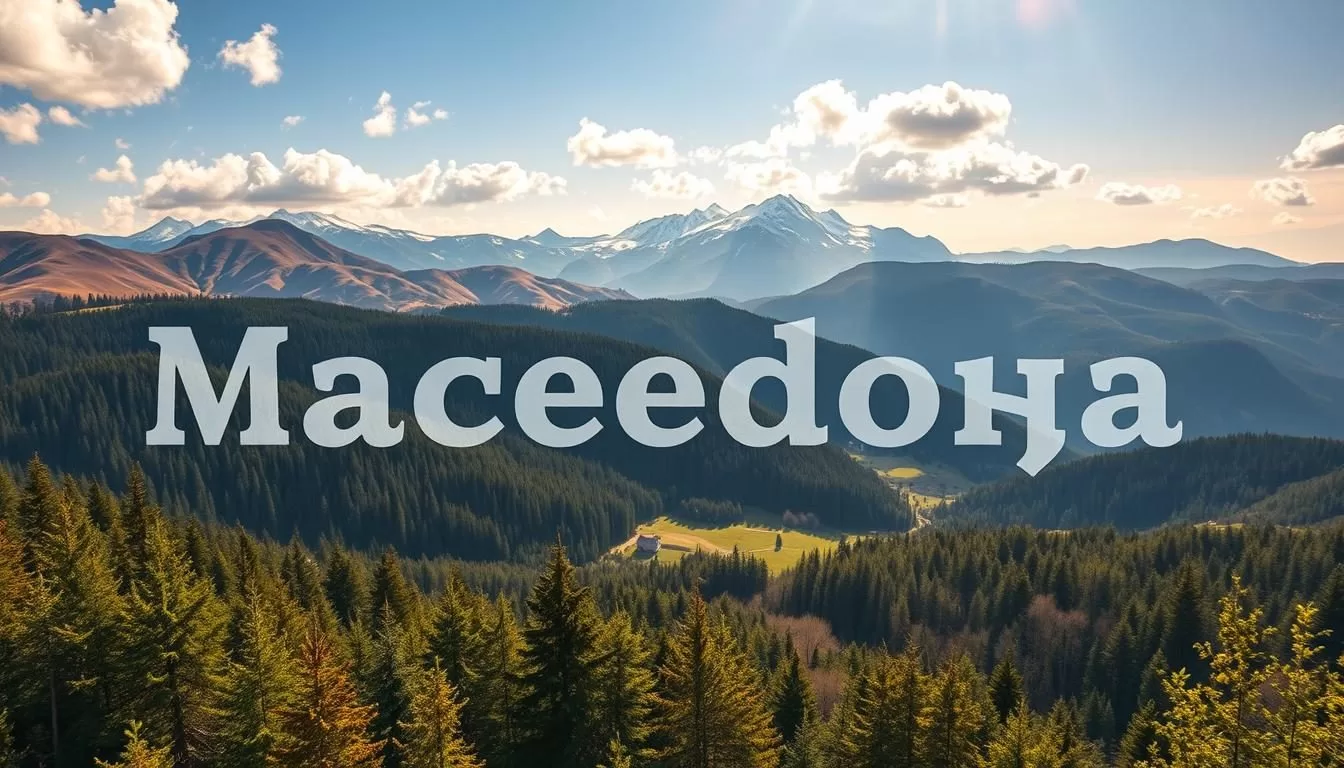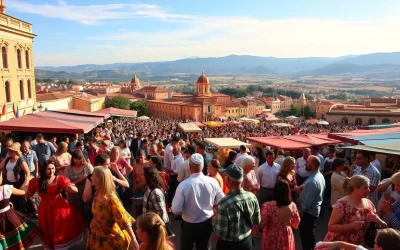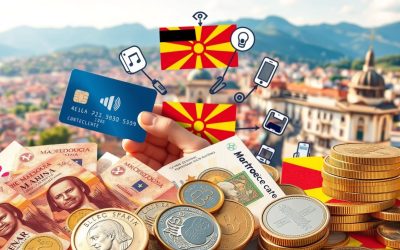✓ Accommodations✓ Flights✓ Rental Cars✓ Tours & Activities
North Macedonia is a country with a rich linguistic heritage. Located in the Balkan Peninsula, it boasts a diverse mix of languages that reflect its history and culture. The official language is Macedonian, a South Slavic language spoken by about 1.6 million people. This language serves as the cultural backbone of the region, connecting communities across the country.
Beyond Macedonian, other languages like Albanian, Turkish, and Romani are also widely used. These languages highlight the country’s multicultural identity. For example, Albanian is co-official in certain areas, reflecting its significance among ethnic communities. This diversity makes North Macedonia a fascinating place to explore linguistic traditions.
Understanding the language landscape here offers insight into the region’s history and social dynamics. Whether you’re learning about dialects or minority languages, this article will guide you through the unique linguistic features of this Balkan nation.
Exploring North Macedonia’s Linguistic Landscape
The linguistic landscape of this Balkan nation is a vibrant tapestry of history and culture. Its language diversity mirrors the region’s geographical and historical makeup. From ancient empires to modern migrations, every word tells a story.
Diversity of Languages and Cultures
This region is home to a rich variety of languages. The Macedonian language, a South Slavic language, serves as the backbone of communication for the majority of the population. However, other languages like Albanian, Turkish, and Romani also play significant roles in daily life.
These languages reflect the multicultural identity of the community. For example, Albanian is co-official in certain areas, highlighting its importance among ethnic groups. This blend of languages creates a unique cultural mosaic.

Geographical and Historical Context
The development of languages here has been shaped by centuries of historical events. The South Slavic language family, to which Macedonian belongs, traces its roots back to the ninth century. Over time, influences from the Ottoman Empire, ancient Greek, and Latin have enriched the vocabulary.
Different dialects also highlight regional variations. Western dialects, spoken in areas like Tetovo and Gostivar, differ from Eastern dialects in Štip and Strumica. These dialects are not just linguistic features but markers of local identity.
Understanding this linguistic landscape offers insight into the place’s history and social dynamics. Whether exploring minority languages or regional dialects, you’ll find a fascinating blend of tradition and modernity.
The Official Language: Macedonian
The Macedonian language stands as a cornerstone of cultural identity in its region. It is the official language of the country, declared as such in 1945. With roots in Old Church Slavonic, it has evolved into a modern standard that connects communities across the region.

Historical Roots and Modern Development
Macedonian is classified as a South Slavic language, primarily spoken in the country and by its communities in neighboring regions. Its development traces back to the ninth century, influenced by historical events and neighboring cultures. Modern Macedonian evolved from western dialects, becoming standardized in the mid-20th century.
This standardization process was crucial for literature and education. It helped unify the language across different regions, ensuring its role as a cultural marker. Today, it serves as the lingua franca for millions of native speakers.
Unique Grammatical and Phonological Features
Macedonian is known for its distinctive grammatical traits. One key feature is the use of postpositive articles, which are added to the end of nouns. For example, the word “house” becomes “house-the” in Macedonian.
Another unique aspect is its stress patterns. Unlike many other Slavic languages, Macedonian uses a fixed stress system. This makes pronunciation more predictable and easier to learn. These features set it apart from its regional peers.
| Feature | Description |
|---|---|
| Postpositive Articles | Added to the end of nouns, e.g., “house-the.” |
| Fixed Stress Patterns | Stress is always on the third-to-last syllable. |
| Cyrillic Alphabet | Adapted from Russian, with unique modifications. |
Understanding these features helps you appreciate the complexity and beauty of the Macedonian language. Whether you’re studying its history or its grammar, you’ll find a rich linguistic tradition worth exploring.
Co-Official and Minority Languages
The linguistic diversity in this region reflects its rich cultural heritage and historical influences. Beyond the primary language, several co-official and minority languages play vital roles in shaping the community’s identity. These languages are not just tools of communication but also markers of cultural pride and unity.

Albanian as a Co-Official Language
Albanian holds a significant position as a co-official language in this region. It is spoken by approximately 25.1% of the population, making it the second most widely used language. This status was formalized through a law passed by the government, ensuring its use in education, governance, and public services.
This recognition reflects the cultural and political importance of the Albanian-speaking community. It also highlights the region’s commitment to inclusivity and respect for linguistic diversity.
Other Minority Languages and Their Roles
In addition to Albanian, several minority languages contribute to the region’s multilingual tapestry. Turkish, Romani, Serbian, and Aromanian are among the most prominent. Each of these languages represents a unique cultural group, adding depth to the region’s identity.
- Turkish: Spoken by 3.8% of the population, it is particularly prevalent in municipalities like Plasnica and Centar Župa.
- Romani: Used by 2.5% of the population, it is a vital part of the Roma community’s heritage.
- Serbian: With 1.2% of speakers, it is most common in areas like Staro Nagoričane.
- Aromanian: Spoken by a smaller percentage, it is concentrated in Kruševo Municipality.
These languages are supported by government policies that promote their use in education and public life. This approach fosters a sense of belonging among minority groups and enriches the region’s cultural landscape.
Dialect Diversity and Regional Variations
Dialects in this region tell a story of history and cultural exchange. Over 29 distinct dialects are recognized, each with unique phonological and vocabulary traits. These variations reflect centuries of migration and interaction with neighboring cultures.

Overview of Macedonian Dialects
The Macedonian language is divided into several dialect groups. Western dialects, spoken in areas like Tetovo, differ significantly from Eastern dialects found in Štip. These differences include stress patterns and specific vocabulary, making each dialect a unique marker of local identity.
For example, Western dialects often use free stress, while Eastern dialects favor fixed stress systems. These features highlight the richness of the language and its adaptability across regions.
Influences from Neighboring Regions
Neighboring languages have left a lasting impact on local dialects. Albanian, Turkish, and Serbian influences are evident in vocabulary and pronunciation. This blending of linguistic elements showcases the region’s openness to cultural exchange.
For instance, some dialects incorporate words from Albanian, reflecting centuries of coexistence. These interactions enrich the language and make it a fascinating subject for study.
Grammar, Phonology, and Linguistic Nuances
Exploring the grammar and phonology of a language reveals its unique identity. The way sounds and rules come together shapes how people communicate and express culture. In this section, you’ll discover what makes the Macedonian language stand out among its peers.
Key Phonological Characteristics
The phonology of this language includes five vowels and specific consonantal rules. One unique feature is clitic doubling, where certain pronouns or particles repeat for emphasis. This is uncommon in other Slavic languages, making it a distinctive trait.
Another interesting aspect is the absence of a verb equivalent to “to have.” Instead, constructions like “I am with” are used to express possession. This reflects the language’s evolution and its adaptation to cultural influences.
Distinctive Grammatical Structures
Grammatically, this language uses postpositive articles, which are added to the end of nouns. For example, “house” becomes “house-the”. This structure simplifies sentence construction while maintaining clarity.
Additionally, the language employs a fixed stress system, where stress always falls on the third-to-last syllable. This makes pronunciation predictable and easier to learn. These features highlight its unique position within the South Slavic language family.
For more detailed insights into these linguistic features, explore this comprehensive guide on Macedonian grammar.
Language Policies and Cultural Identity in North Macedonia
Language policies play a pivotal role in shaping cultural identity in this region. The government has implemented measures to ensure that language rights extend to both official speakers and minority communities. These efforts help unify diverse groups while preserving their unique heritage.
Government Initiatives and Language Rights
The government has taken significant steps to protect language rights. For example, the Law on the Use of Languages, adopted in 2008, ensures that Macedonian remains the primary official language. However, it also allows other languages spoken by at least 20% of the population to be used in local governance.
This approach reflects a commitment to inclusivity. Albanian, for instance, is co-official in areas where it is widely spoken. Such policies help foster a sense of belonging among minority groups.
Impact on National and Community Identity
Language policies not only protect rights but also shape identity. By recognizing multiple languages, the government acknowledges the cultural richness of the region. This recognition strengthens national unity while celebrating diversity.
For example, the use of Albanian in education and public services has empowered its speakers. Similarly, the inclusion of Romani and Turkish in certain areas highlights their cultural significance.
These policies show how language can be a bridge between communities. They also demonstrate the region’s dedication to preserving its multicultural heritage. To learn more about how these policies influence cultural identity, explore this detailed analysis.
North Macedonia: Official and widely spoken languages – A Comprehensive Guide
Understanding the linguistic landscape of this region offers a window into its cultural and historical richness. The Macedonian language, written in Cyrillic script, serves as the official language and is spoken by the majority of the population. This South Slavic language is a cornerstone of national identity, connecting communities across the country.
Beyond the primary language, the region is home to a vibrant mix of minority languages. Albanian, Turkish, Romani, and Serbian are widely spoken, reflecting the area’s multicultural heritage. These languages are not just tools of communication but also markers of cultural pride and unity.
Here’s a quick overview of the linguistic elements covered in this guide:
- Official Status: Macedonian is the primary language, with Albanian co-official in certain areas.
- Minority Rights: Policies ensure the use of minority languages in education and public services.
- Dialect Variations: Over 29 distinct dialects highlight regional differences and historical influences.
The government plays a crucial role in preserving linguistic diversity. Laws protect the rights of minority speakers, fostering inclusivity and respect for cultural heritage. This approach strengthens national unity while celebrating the region’s multicultural identity.
For a deeper dive into the history and cultural significance of these languages, explore the Library of Congress’s comprehensive collection. Additionally, learn more about the region’s diverse linguistic landscape in this detailed guide.
This guide serves as a one-stop reference for understanding the complexity and beauty of the region’s language landscape. Whether you’re exploring dialects or minority rights, you’ll find a rich tapestry of tradition and modernity.
Conclusion
The language landscape of this region is a testament to its rich history and cultural diversity. The Macedonian language, spoken by approximately two million people, serves as a unifying force. Its unique features, like the Cyrillic alphabet with 31 letters, highlight its distinct identity.
Beyond the primary language, minority tongues like Albanian and Turkish enrich the community. These dialects and languages reflect centuries of cultural exchange and coexistence. They are not just tools of communication but also markers of heritage.
Understanding this linguistic diversity offers insight into the region’s identity. It shows how language shapes unity while celebrating differences. To explore more about this fascinating topic, visit this detailed guide.
The above is subject to change.
Check back often to TRAVEL.COM for the latest travel tips and deals.






